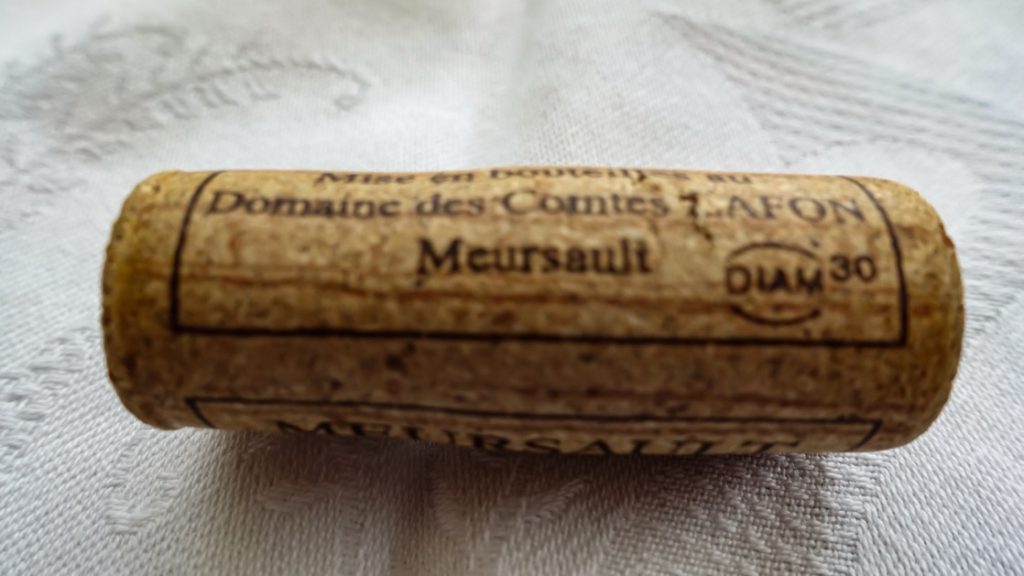As you can imagine, the possibilities of doing live interviews with eligible Burgundy geeks are few and far between in a time of lockdown.
I have therefore decided to start a new trend: the self-interview, which I’m sure will become the new black – or at least yellow.
Wine journalist the Winehog is interviewing wine consumer Steen Öhman (aka the Winehog, below) about Diam closures.

Six pointed questions about Diam
A short note on the Diam corks – Diam closures are made from granulated cork that has been treated via patented process thus eliminating TCA (2,4,6-trichloroanisole). The Diam corks are furthermore produced in a way that ensures a permeability which is consistent and controlled – hence ensuring a stable and cohesive maturing of the wines.
You can read more about Diam here…

There are quite some critical questions regarding the Diam closure and it is therefore only natural to discuss these possible issues… so let’s see what the Winehog says!
Do you buy and drink wines under Diam?
Yes; I both buy and drink wines under Diam. I do not see this as a buying-decision factor, and many good wines are now sealed under Diam. If I want a bottle of young Lafon … then I will have to accept the Diam – and I will.
In general a wine needs to age more than three or four years – perhaps even longer – before most will find a noticeable difference between regular cork and a well-implemented Diam. So if you drink your wine that young, why not?
Can you taste the Diam closure?
I know that some – including people in Burgundy whose opinion I respect – say that they detect a certain “Diam note” in wines under it. To be honest, so far I have not been able to detect it.
Longer aging, however, is a different matter, and I do worry about wines that I will store for 20+ years. This is the still-unanswered question for me: Will they, under Diam, age optimally in the long run? I try to follow this topic.
Diam closures for reds?
Honestly, I don’t see much point of using Diam for red wine, as premox for me is the main reason to use it.
That said, I don’t see reds with Diam as a problem per se. But for now, I would be reluctant to cellar a Diam red for 30+ years – I don’t see the point (what’s more, I’m 55 now).
Do you see room for improvement concerning the use of Diam?
I do think that winemakers are getting better and better, including in their use of Diam. However, I think the level of sulphur is one area where vignerons can improve further to raise the quality of their wines. A lot of the issues with Diam have apparently been related to unchanged high sulphur levels when switching to Diam.
High level of sulphur and Diam will normally not please my palate!
Do you see more use of Diam in the future?
Yes; expect a double Diam – two corks in each bottle – as the closure is now much cheaper than Burgundian wine volume-wise.
OK, to be serious, the change in Burgundy consumption is clear: The wines on average are tasted and drunk younger and younger (sadly), and the ability to age 30 years in bottle is of little real interest to many consumers, although some would say otherwise.
As a consequence, more and more wines are apparently being made for earlier consumption, and the choice of closure will presumably follow – Diam or not.
I am, however, an old man with old-fashioned Burgundy tastes and traditions – luckily(?).
Grumpier Old Men prefer Domaine Leflaive Les Pucelles 1996 …
Would you recommend a vigneron change to Diam?
This must be up to the vigneron, as it’s a complex question than requires weighing a significant number of factors.
My advice would be : If you can without hesitation say that regular cork works well without any problems, why change?


 - A true vin d’émotion – a Burgundy of passion
- A true vin d’émotion – a Burgundy of passion - A truly hedonistic wine – lively and enjoyable
- A truly hedonistic wine – lively and enjoyable - A vivacious wine for pure indulgance
- A vivacious wine for pure indulgance - A potential vin d´émotion - frais et léger
- A potential vin d´émotion - frais et léger
Leave a Reply
You must be logged in to post a comment.